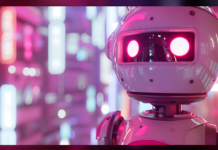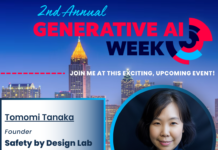Have you ever found yourself having a surprisingly deep conversation with a virtual character or felt disappointed when a chatbot couldn’t understand you? These experiences highlight a fascinating phenomenon: our tendency to treat human-like AI characters, or GenAI characters for short, as if they were real people. This tendency, known as anthropomorphism, is shaping how we interact with a new wave of technology. This peculiarity intensifies as the AI-generated characters become more realistic, such as characters that talk and look just like humans.
In this blog post, we’ll look into the psychology behind anthropomorphism and explore its implications for the future of GenAI.
The Science of Seeing People Where There Aren’t Any
Anthropomorphism is a deeply ingrained cognitive bias that leads us to attribute human characteristics, emotions, and even intentions to non-human entities. This bias plays a significant role in our interactions with GenAI characters.
Here are some key behavioral biases that fuel our humanizing tendencies towards AI:
- Agency Detection Bias:
We have a built-in inclination to see purpose and intention behind actions, even when they come from machines. When a GenAI character responds to our questions or requests, we might subconsciously perceive it as having its own thoughts and motivations. - Sociality Bias:
Humans are social creatures wired to seek connection. This bias can lead us to form parasocial bonds with GenAI characters, treating them as companions even though they are artificial. - Confirmation Bias:
We often interpret information in a way that confirms our existing beliefs. If we expect a GenAI character to behave intelligently, we might be more likely to overlook its limitations and interpret its responses as evidence of human-like understanding. - Projection Bias:
This bias involves projecting our own emotions and thoughts onto others. When interacting with a GenAI character that uses natural language and responds in a way that mimics human conversation, we might unconsciously project our own feelings onto it.
The Double-Edged Sword of Anthropomorphism
The rise of anthropomorphic GenAI characters has significant implications, both positive and negative.
- Emotional Engagement:
People can develop strong emotional connections with GenAI characters, which can be beneficial for those seeking companionship or support. However, over-dependence on AI for emotional needs might require future consideration. - Ethical Considerations:
As GenAI characters become more realistic, ethical questions arise. Should we treat AI with human-like qualities differently? What are the responsibilities of developers in creating emotionally engaging AI experiences? - Market Dynamics:
Companies are leveraging anthropomorphism to create more user-friendly and engaging AI experiences. This can be positive for user adoption but raises concerns about potential manipulation or exploitation through AI-driven marketing tactics.
The Call for Attention
While the field of AI has extensively explored cognitive biases within the data used to train these systems, less attention has been paid to the psychology of human-AI interactions. Our natural tendencies, like anthropomorphism, can significantly influence how we perceive and interact with AI characters. By understanding these human factors, we can build more effective and ethical AI technologies. This is why I believe a deeper exploration of human-AI interaction and the psychological factors at play is crucial for the responsible development and deployment of Generative AI.
The Future of Human-AI Relationships
Understanding anthropomorphism is crucial for navigating the evolving landscape of human-AI interaction. Behavioral science can contribute to this understanding. As GenAI technology continues to develop, exploring solutions to address ethical concerns and fostering responsible development practices will be essential.
What are your thoughts on the increasing humanization of AI characters? Have you had any experiences that highlight the power of anthropomorphism in GenAI interactions?
In the next post, we’ll look into the reasons behind inappropriate behavior towards GenAI companions.




